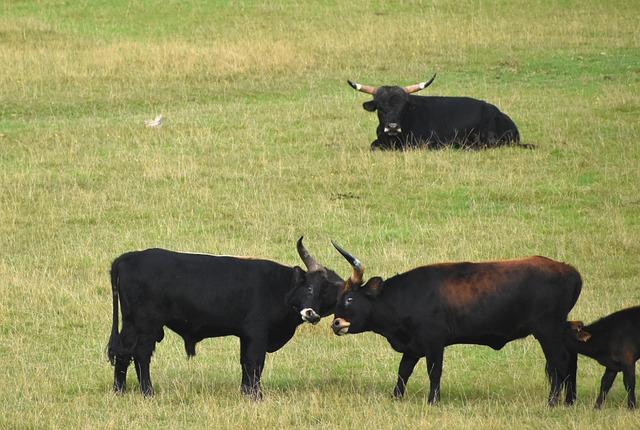In the horn of Africa, the simmering tensions between Ethiopia and Eritrea risk escalating into a broader conflict, fueled by the ongoing power struggle in the Tigray region. Following the 2020 outbreak of violence in Tigray, the fragile peace established between Addis Ababa and Asmara after years of hostilities has been tested like never before. As Ethiopian Prime Minister Abiy ahmed grapples with internal dissent and regional instability, the involvement of Eritrean forces in Tigray has rekindled historical grievances, reviving fears of another war between the two nations. This article examines the complexities of the Tigray conflict, its implications for Ethiopian democracy, and the potential repercussions for regional security, as the power dynamics shift and the specter of conflict looms ever larger on the horizon.
Tigray Conflict and Its Implications for Regional Stability
The ongoing turmoil in Tigray has far-reaching consequences for Ethiopia, but it also threatens stability in the broader Horn of Africa region.As tensions escalate between the Tigray People’s Liberation Front (TPLF) and the Ethiopian federal government,the risk of spillover effects into neighboring Eritrea looms large. Key factors influencing this precarious situation include:
- Historical Tensions: The bitter history between Ethiopia and Eritrea remains a significant backdrop, with both countries having emerged from long-standing conflicts that could easily reignite under the current circumstances.
- Cross-Border Militancy: The TPLF’s ability to mobilize support from factions within Eritrea could exacerbate existing animosities, leading to a potential resurgence in armed conflict.
- Humanitarian Crisis: The ongoing humanitarian fallout in Tigray could incite regional allies to intervene, either to support humanitarian efforts or to back their respective factions, thereby complicating the conflict further.
The international community has begun to acknowledge the delicate balance of power in the region,with diplomatic efforts focused on de-escalation and dialog. however, the situation remains fluid as regional actors weigh their options. The implications of the Tigray conflict for Eritrea can be summarized in the table below:
| Implication | Potential Outcome |
|---|---|
| Increased Refugee Influx | Strain on Eritrea’s Resources |
| Heightened Military Activity | Risk of Armed Confrontation |
| Regional Power Shifts | Change in Alliances |
The Historical Rift Between Ethiopia and Eritrea
The relationship between Ethiopia and Eritrea has been shaped by decades of conflict, colonial legacies, and national identities. At the heart of the tensions is the bitter memory of the 30-year war for Eritrean independence, culminating in 1993. Following Eritrea’s secession from Ethiopia, a fragile peace was established, but it was short-lived. The two nations descended into further conflict with the Eritrean-ethiopian War from 1998 to 2000, which left unresolved border disputes and deep-seated animosities.These historical grievances continue to color the political landscape, influencing public sentiment and fueling nationalistic fervor on both sides.
As political tensions resurface due to the ongoing power struggle in Tigray,there are growing fears that a new eruption of hostilities could reignite the rift between the two countries.Factors contributing to this precarious situation include:
- Militarization along the border regions
- Involvement of external powers seeking influence
- Internal divisions within Ethiopia complicating alliances
- Ethnic minorities seeking autonomy exacerbating diplomatic channels
Should the situation escalate, it risks not only reigniting the conflict but could also lead to a broader regional instability in the Horn of Africa. The volatile interplay of historical grievances and contemporary political dynamics has transformed Ethiopia and Eritrea from neighbors into adversaries, with repercussions that could extend far beyond their borders.
Geopolitical stakes in the Horn of Africa
The Horn of Africa stands at a critical juncture, with the ongoing power struggle in Tigray posing significant risks not only to ethiopia but also to its neighbor, Eritrea. As the conflict escalates, tensions have reignited between these two countries, which share a tumultuous history marked by a deadly border war that ended in 2000. With both nations bolstering military capabilities along their borders, the potential for miscalculations that could spark full-scale military confrontations looms large. Key factors influencing the geopolitical stakes include:
- Resource Scarcity: Competition for water and grazing land exacerbates existing animosities.
- Ethnic Divisions: Ethnic politics in Ethiopia can spill over into Eritrea, amplifying sectarian violence.
- external Influences: Intervention by foreign powers, each with differing aims, can further complicate the dynamics.
The regional implications of this power struggle extend beyond immediate borders. neighboring countries like Djibouti and somalia are also watching closely, as instability could destabilize their own political landscapes. Moreover, the ongoing humanitarian crisis in Tigray not only threatens Ethiopian national integrity but can also lead to massive refugee flows into neighboring nations, straining resources and igniting further regional conflicts. A delicate web of alliances,rivalries,and aspirations makes the Horn of Africa a powder keg where a single conflict can unleash broader ramifications.
| Geopolitical Factors | Potential risks |
|---|---|
| border Disputes | Increased military confrontations |
| Ethnic Rivalries | Heightened violence and unrest |
| International Interests | Proxy wars and foreign intervention |
Humanitarian Crisis Amidst the Power Struggle
The ongoing power struggle in Tigray has escalated into a profound humanitarian crisis, severely impacting millions of civilians. With a blockade on aid deliveries, vital supplies such as food, water, and medical assistance have become scarce. Reports indicate that over 5 million people are in urgent need of humanitarian support, and without immediate intervention, many face dire consequences. Key factors contributing to this crisis include:
- Military Blockades: Ongoing military engagements have restricted access for humanitarian organizations.
- Displacement: The conflict has forced nearly 2 million residents to flee their homes.
- Resource Scarcity: Food shortages are exacerbated by agricultural disruption, leaving families vulnerable.
As the Ethiopian government and Tigray People’s Liberation front (TPLF) engage in power battles, the potential for regional instability looms large, particularly with Eritrea’s involvement. Eritrean forces have already crossed borders, adding another layer of complexity to the crisis. Observers warn that this power tussle may not only destructively reshape Ethiopia’s internal dynamics but also push the Horn of Africa towards another prolonged conflict, reminiscent of past hostilities between Eritrea and Ethiopia. The implications of a large-scale war would extend beyond borders, threatening regional peace and stability.
| Humanitarian Impact | Statistics |
|---|---|
| People in Need of Aid | 5 million |
| Displaced Individuals | 2 million |
| Food Insecure Population | 1.7 million |
Diplomatic Solutions to Prevent Escalation
In the face of increasing tensions resulting from the Tigray power struggle,diplomatic interventions become crucial to avoid a broader conflict between Ethiopia and Eritrea. A multi-faceted approach involving regional and international stakeholders can facilitate dialogue and build trust among the parties involved. Key strategies may include:
- Engaging Regional Powers: Countries like Kenya and South Africa, with historical ties and influence in the Horn of Africa, should be encouraged to act as mediators.
- Involving International Organizations: The African Union and the United Nations can play a pivotal role in providing a neutral platform for negotiations.
- Establishing Dialogue Channels: Direct discussions between Ethiopian and Eritrean leaders can be vital to de-escalate tensions before they spiral out of control.
Additionally, confidence-building measures must be prioritized to foster a conducive environment for dialogue. These might include:
| Measure | Description |
|---|---|
| Ceasefire Agreements | Implementing temporary ceasefires to halt military actions allows for negotiations to take place. |
| Humanitarian Access | Ensuring that humanitarian aid reaches affected populations can mitigate suffering and build goodwill. |
| Joint Economic Projects | Collaborative projects can create interdependence and incentivize peace over conflict. |
International Response and Peacekeeping Initiatives
The international community has been closely monitoring the escalating tensions between Ethiopia and Eritrea, particularly in light of the ongoing power struggle in the Tigray region. Several nations and international organizations have expressed their concerns, emphasizing the need for a cooperative approach to avert a further deterioration of the conflict. Key diplomatic efforts include:
- United Nations Involvement: The UN has called for an immediate ceasefire and urged both governments to engage in negotiations, reinforcing the importance of humanitarian aid reaching affected populations.
- African Union Mediation: The African Union has offered to mediate discussions, aimed at establishing a lasting peace agreement that addresses the root causes of the conflict.
- Global Sanctions Consideration: Countries,particularly in the West,are contemplating sanctions against Eritrea to pressure its government to cease military involvement in Ethiopia’s internal conflict.
Peacekeeping initiatives are crucial in ensuring stability in the Horn of Africa. Countries within the region have suggested the deployment of neutral peacekeeping forces to provide security and monitor the situation. The effectiveness of these initiatives can be assessed through various key indicators, as outlined in the table below:
| Indicator | status | Importance |
|---|---|---|
| Ceasefire agreement | Pending | Essential for peace negotiations |
| Humanitarian Access | Limited | Critical for civilian safety and aid distribution |
| International Monitoring | proposed | To ensure accountability and compliance |
The Conclusion
the ongoing power struggle in Tigray poses a significant risk not only to Ethiopia’s internal stability but also to regional peace, particularly between Ethiopia and Eritrea. The historical grievances and complex political dynamics that characterize these two nations add another layer of tension to an already volatile situation. As military engagements continue and diplomatic efforts wane, the international community must pay close attention to the evolving conflict. The potential for escalation into a broader war could have dire consequences for millions. It is indeed imperative that diplomatic channels are prioritized, and stakeholders work towards a peaceful resolution to avert a humanitarian catastrophe and promote long-term stability in the Horn of Africa. The coming months will be critical in shaping the future of this region, and the choices made by leaders today will echo for generations to come.

